|
hChoishimichih Walkc.8@@ |
|
| @Finally you are walking in the City of Koyasan. You can see easily the
stone markers. Shortly before the entrance to the Garan you will find the stone
marker 1 behind the fence, you will probably have a feeling of relief. You
would like to see Mie-do (the Memorial hall of Kobo Daishi) and the Golden
Hall, but this is reserved for the next
time. Continuing the way to Oku-no-in you will find stone marker 10 (of the 36
stonemarkers from Garan to the Oku-no-in) close to the Daien-in where Yokobue
(see stonemarker 112) became a bush warbler and committed suicide in the nearby
well. What happened to the bush warbler? Its body was placed in the body of the
Amida Buddha sculpture. Stone marker 17 is placed close to the entrance of the
cemetery Oku-no-in. The stone marker 22 and 25 had been offered by the master
builder of the gchoishimichih Yasumori Adachi in favor of his grandfather
Kagemori Nyudo. Yasumori Adachi offered in total five stone markers. Crossing
the third bridge called gGobyo no Hashih, leading to the mausoleum of Kobo Daishi close to the stairs which lead
to the Latern Hall you will find stone marker 35. You will find stone marker 36
behind the fence surrounding the mausoleum of Kobo Daishi. It is difficult to
see stone marker 36, but if you
discover it, your gChoishimichih walk of 2l6 stone markers finds its end. |
|
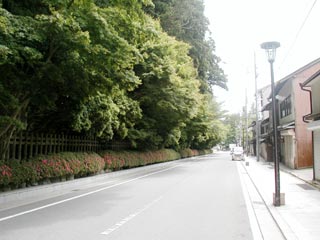 |
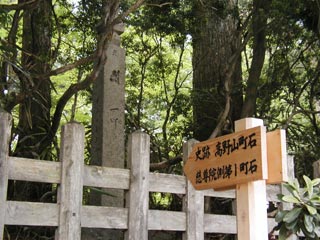 |
|
Koyasan main street, National road 480. |
Stone marker 1 behind the fence close to Garan |
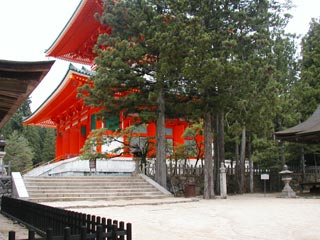 |
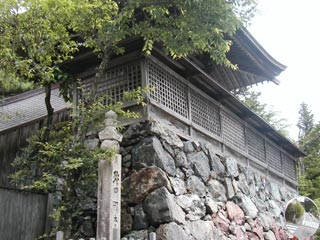 |
|
Kompon Daito, the great stupa is the starting point 0. The Kompon Daito is the symbol of enlightenment in Mikkyo, the esoteric Buddhist teaching, originally designed by Kobo Daishi. The stupa is constructed in form of a tahoto, a single story pagoda, around 50 m tall and red lacquered. Inside is the construction of a three-dimensional Mandala composed of the main Buddha Dainichi Nyorai of the
Taizokai Mandala placed in the center and
surrounded with four Wisdom Buddhas of the Kongokai Mandala. On the
pillars the 16 Mahabodhisattvas as well of the Kongokai Mandala are painted colourfully, expressing in this form
the world of the Mandala, the world of enlightenment. |
Stone marker 4 at the corner of the 6 ofclock bell offered by Fukushima
Masanori. The clock is still struck every two hours from 6 ofclock in the
morning to 10 ofclock in the evening. |
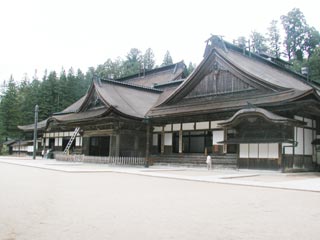 |
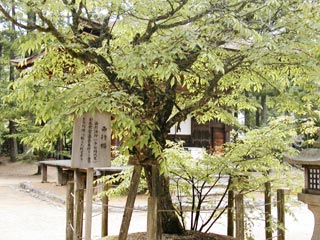 |
| @@@Kongobuji, Head office of the Koyasan Shingon Buddhist Denomination | @Cherry trees planted in front of the Sanmaido by a monk-poet Saigyo who travelled many times between Koyasan and his temple called gSaigyo-Doh in Amano. |
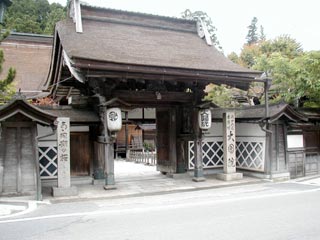 |
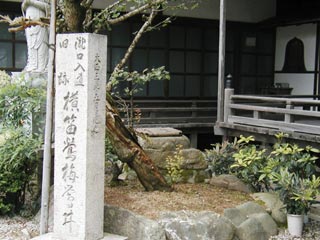 |
|
Stone marker 10 near Daien-in |
|
 |
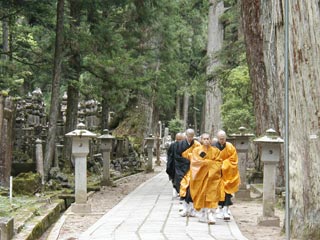 |
|
Stone marker 17 in front of the first bridge to the Oku-no-in called
gIchi-no-hashih |
Practicing
priests walking in line to the mausoleum of Kobo Daishi in Oku-no-in |
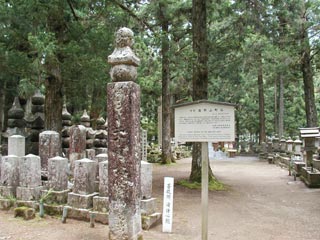 |
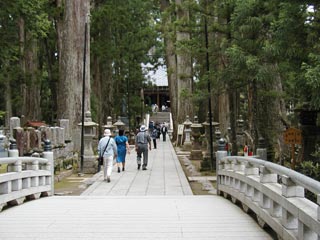 |
|
Stone marker 25 shows an engraving of the name and title of a minister
which can be read as gAkita Josuke Fujiwara no Ason Yasumorih. |
gGobyo no Hashih, the bridge leading to the mausoleum: on the bottom of the bridge are engraved Siddham letters refering to the 37 worshipping figures of the Kongokai Mandala. Crossing the bridge, you will reach the Lantern Hall and the mausoleum of Kobo Daishi behind the hall. |
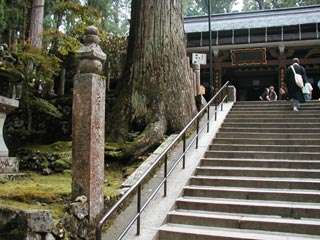 |
@
Stone marker 36 is seen within the fence of the mausoleum. There is no
photo because shooting pictures is banned in this area. Please search by
yourself. |
|
Stone marker 35 is found on the left side close to the staircase leading to the Lantern Hall where the lantern donated by the gpoor womanh has been kept burning for about one thousand years. |
|